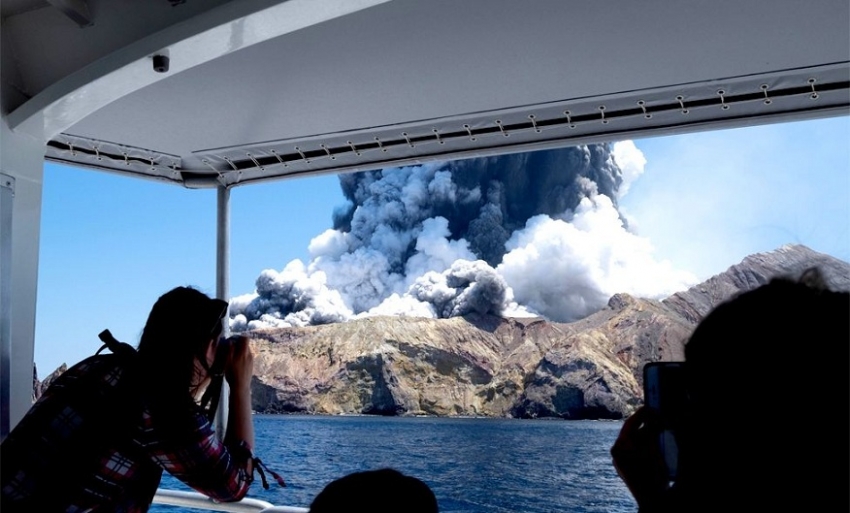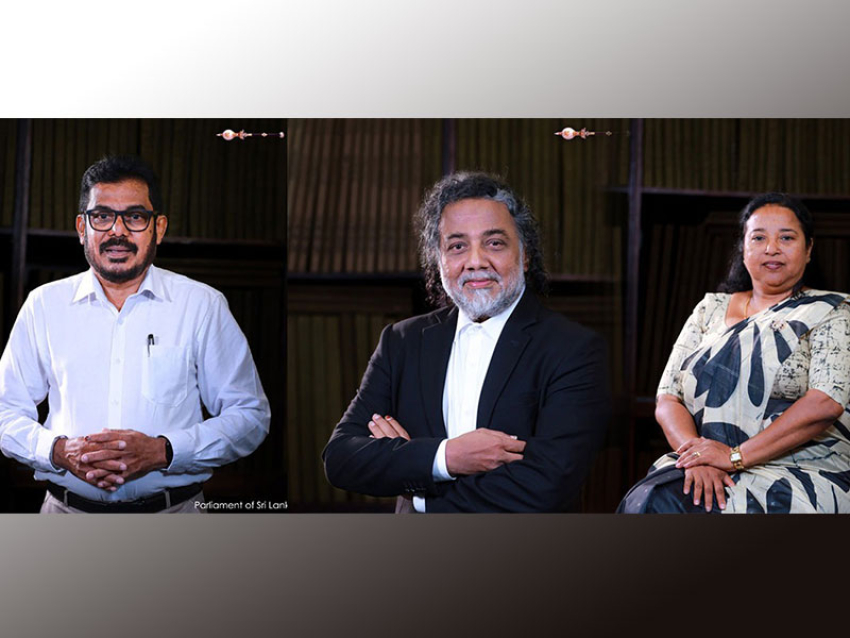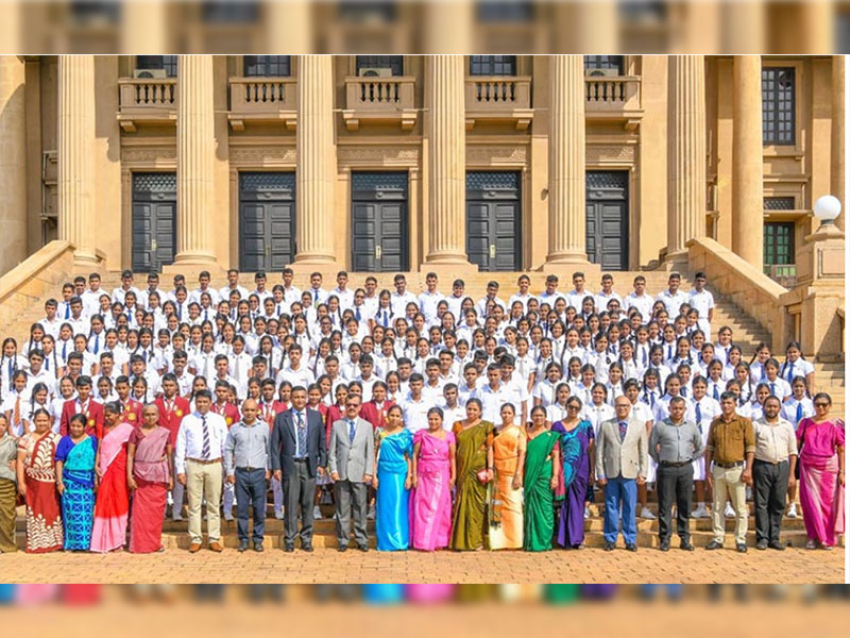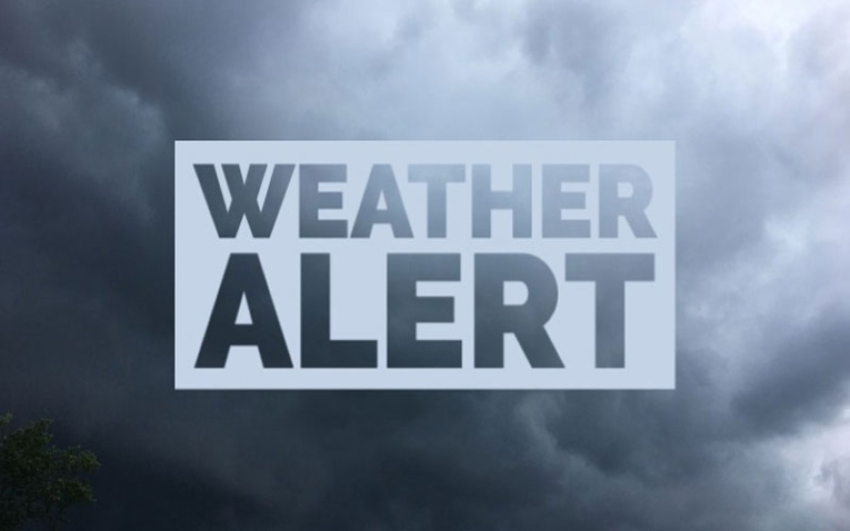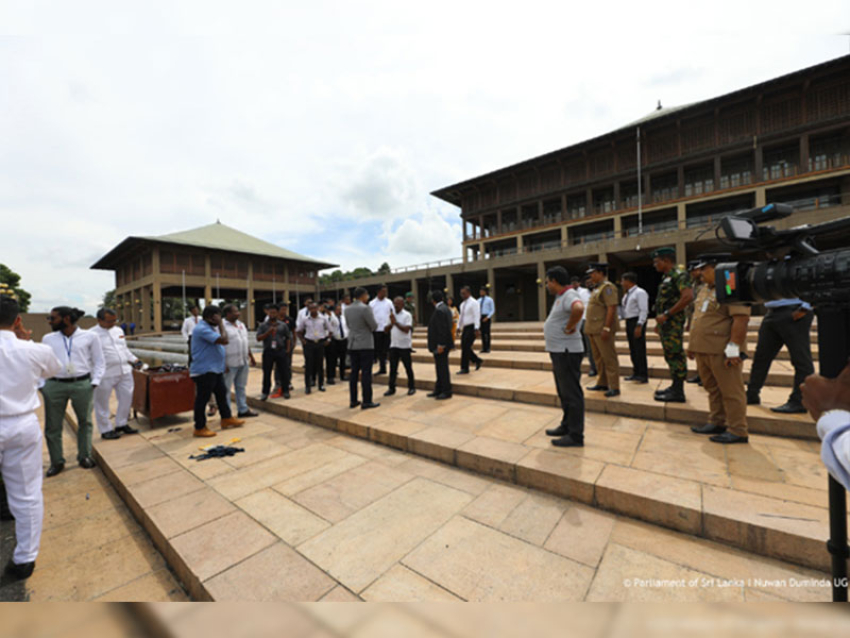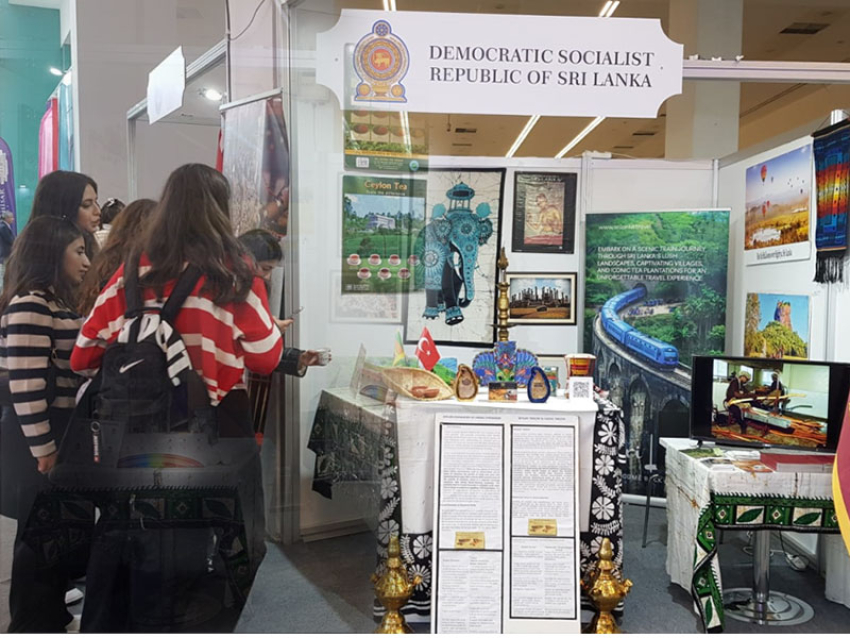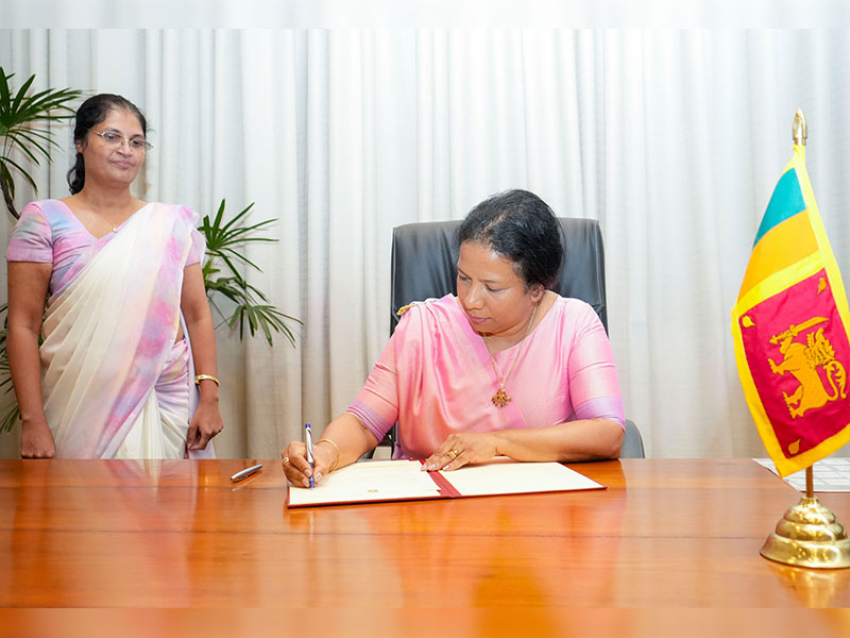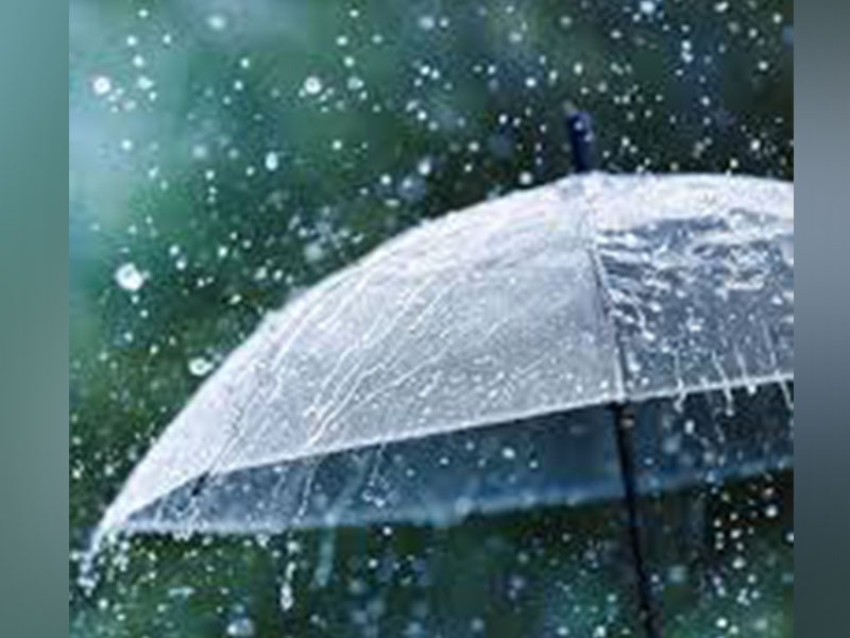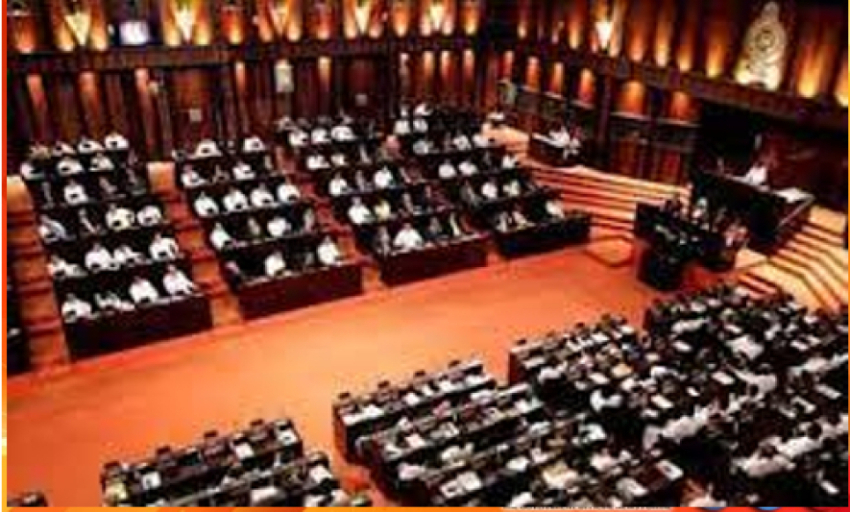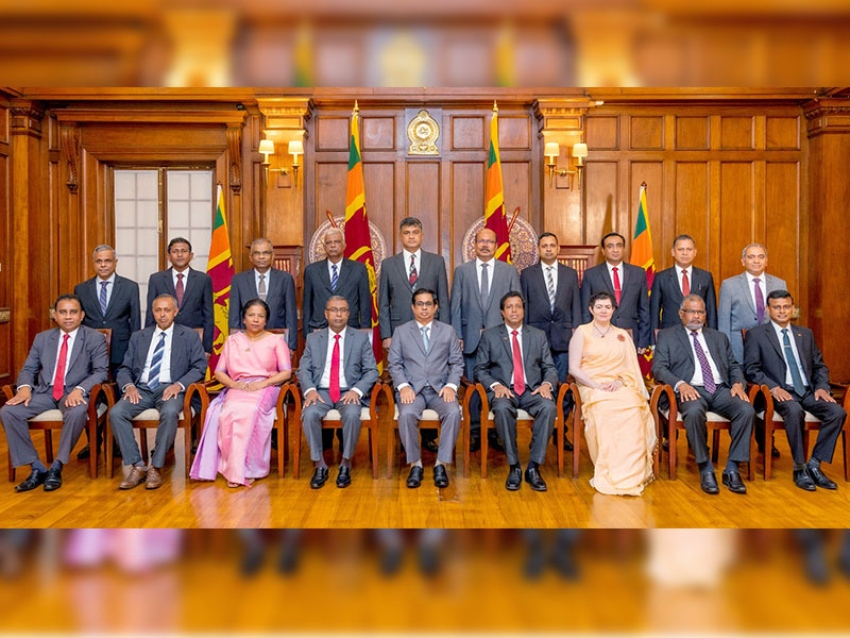New Zealand PM Jacinda Ardern has said there were no signs of life on White Island following a volcanic eruption.She said the focus was now "on recovery" and "to return loved ones", once the island was safe.Thirteen people are presumed to have died, five of those are confirmed dead and eight are still missing on the island.The volcano erupted on Monday as tourists were visiting the popular attraction.Thirty-four people survived, with most of them still receiving treatment in hospital.Among those hit by the eruption are people from New Zealand, Australia, Germany, China, Malaysia, the US and the UK, according to police."To those who have lost or are missing family and friends, we share in your unfathomable grief in this moment at time and in your sorrow," Prime Minister Ardern said.
Reconnaissance flights were able to reach White Island on Tuesday morning She said reconnaissance flights landed on the island but saw no signs of life. "The helicopter pilot, as I understand, physically moved around the island rather than just an aerial survey and did so for some time and so brought back that report that unfortunately there were no signs of life."Police deputy commissioner John Tims said police would commence a criminal investigation into the "death and injuries" on White Island.
Visitors from several countries as well as locals are among the missing and injured.Police said a total of 47 people had been on the island when the disaster happened on Monday afternoon local time.They were 24 visitors from Australia, nine from the US, five from New Zealand, four from Germany, two from China and one person from Malaysia.The first victim to be identified is tour guide Hayden Marshall-Inman, a local of nearby town Whakatane, who according to New Zealand media has been named by his brother on Facebook.Another tour guide from New Zealand, 24-year old Tipene Maangi, is among the missing with his family telling media he had been called in on his day off.Two British women were among those receiving treatment, said the UK High Commissioner to New Zealand, Laura Clarke.
There was still smoke above White Island on Tuesday morningAustralian Prime Minister Scott Morrison said he "feared" three of the five confirmed dead were Australian.Mr Morrison said that 24 Australians were on board a cruise ship exploring the island in the Bay of Plenty when the volcano erupted. Of those, 13 people had been hospitalised and 11 were unaccounted for, he said."This is a terrible tragedy, a time of great innocence and joy interrupted by the horror of that eruption," Mr Morrison told reporters in Sydney.Ms Ardern acknowledged the apparently high number of Australian victims."Can I say to our Australian family, there are no two countries closer and we are devastated at what has happened here and particularly want to acknowledge those from Australia who have been caught up in this horrific, horrific incident," she said.A web page has been set up by the New Zealand Red Cross for families to register missing loved ones.
White Island, also called Whakaari, is the country's most active volcano. Despite that, the privately owned island is a tourist destination with frequent day tours and scenic flights available.The volcano erupted in two explosions in quick succession at around 14:11 (01:11 GMT) on Monday, sending up a thick plume of ash and smoke.A live feed from the volcano showed several visitors inside the crater before the stream went dark.According to Ms Ardern, there were two groups on the island at the time, "those who were able to be evacuated and those who were close to the eruption".Some survivors were rescued by boat in the immediate aftermath of the explosion, but police said it was too dangerous to mount a rescue operation.But later private helicopter rescue missions picked up several people from the island.Speaking on Tuesday morning, Prime Minister Ardern paid tribute to helicopter crews who had flown to the island on Monday to bring people out despite the dangers.I want to acknowledge the courageous decision made by first responders and those pilots who in their immediate rescue efforts made an incredibly brave decision under extraordinarily dangerous circumstances in an attempt to get people out," she said.Since then, emergency services have been unable to search the area because of dangerous conditions, with plumes of smoke and ash continuing to rise above the volcano on Tuesday.
Here's what you may have missed
If you're just tuning in to our coverage now, here are some things you may have missed:
A criminal investigation has been launched into the death and injuries on White Island
Five people have died and eight are still missing, but police say it is unlikely they have survived
Police have confirmed the nationalities of the 47 people who were on the island at the time of the eruption. Visitors came from the UK, Australia, New Zealand, China, Malaysia, the US and Germany
27 people that have burns to more than 30% of their bodies are now in hospital receiving care. Several others are also suffering from inhalation burns
There is a 50% chance that an eruption of the same size or smaller could happen in the next 24 hours.
Smoke and ash rises from a volcano on White Island
Malaysian man among the dead
One Malaysian is confirmed to be among the dead. The High Commission of Malaysia says it will provide further updates. Little more is known about this victim.The mayor of Whakatane Judy Turner has sent her condolences to the victims, but added that the tours of White Island have had a clean record for years.In a press conference on Tuesday, she said the tours have been "running for ... [nearly] 30 years" . She added that she had been on their tours personally in the past and had been "impressed".
GeoNet - New Zealand's geological hazard information site - has just put together some key facts about White Island. It confirms the island as New Zealand's most active volcano and says it is indeed characterised by explosive eruptions which "occur with little-to-no warning, and often impact the Main Crater floor area".It points out that the volcano was in almost continuous eruption from 1976 to 2000.
A family of four from Sydney are among those unaccounted for. They have been named by Australian media as Anthony and Kristine Langford and their children Jesse, 19, and Winona, 17."We don't know anything at all,” Mr Langford’s brother, Rodney, told local network Seven. “I hope that anyone who knows anything, who sees my brother or his wife or his kids, can notify the media and they can notify us."A post by Ms Langford on social media last week appears to show the family before they left Sydney. It was tagged “Ovation of the Seas” – the name of the cruise ship – and included a happy birthday message to Mr Langford.
A helicopter on the island was destroyed by the eruption - photographs taken as people fled the island show the ash-covered aircraft.Over the past few hours it has emerged that several helicopter pilots - including some from privately-run helicopter services - made the snap decision to fly to the island to rescue people after the eruption.PM Jacinda Ardern paid tribute to their bravery earlier on Tuesday: "They made an incredibly brave decision under extraordinarily dangerous circumstances in an attempt to get people out."
Police: Eight missing presumed dead,New Zealand police said the eight people still unaccounted are likely dead. "I would strongly suggest that there is no one that has survived on the island," deputy commissioner John Tims told reporters in Wellington.27 people have burns to their body greater than 30%Police say there are 27 people who have burns to their body "greater than 30%" - this means they will be treated at the National Burns Unit, which is "the highest care [New Zealand] can provide".Several others have suffered inhalation injuries.
Who were the 47 people on the island?The nationalities of those who were on the island have now been announced by police. The breakdown is as such:
- 2 people from UK
- 4 from Germany
- 24 from Australia
- 5 from New Zealand
- 2 from China
-1 from Malaysia
-9 from the United States
Criminal investigation to be launchedPolice deputy commissioner John Tims says police will commence a criminal investigation into the "death and injuries" on White Island.
50% chance of an eruption happening over next 24 hours
New Zealand police say in a press conference that scientists from GNS say there is a "50% chance a smaller or similar size eruption" could happen in the next 24 hours. They add that a large eruption is "unlikely" at this time.
A police press conference in New Zealand is under way - it's the first of a number that is set to happen as authorities try to work out if they can get to the island.PM Jacinda Ardern meets emergency servicesNew Zealand PM Jacinda Ardern met the first responders to the White Island eruption earlier on Tuesday.She was seen hugging and shaking the hands of those who were first on the scene, calling them "incredibly brave".New Zealand Prime Minister Jacinda Ardern meets with first responders at the Whakatane Fire Station
nks.Auckland Rescue Helicopter Trust has released this photo from a rescue helicopter heading toward the White Island volcano today:Auckland Rescue Helicopter Trust has released this photo from a rescue helicopter heading toward the White Island volcano.
Missing guide came into work on day offA close relative of Tipene Maangi - a tour guide believed to have been on White Island when the volcano erupted - said he wasn't supposed to be at work on Monday.Anihera Paku said Maangi, who only started his job earlier in September, was called in to pick up extra shifts.Ms Paku said the family was "heartbroken"."He's a really good people person, you could be having a really bad day and here comes Tipene and his cheeky remarks to brighten your day," she told news site Newshub."He would have been helping others before he thought about himself."
White Island: The privately-owned New Zealand volcano that is always active
9 December 2019
White Island is a popular tourist destinationMoments before one of New Zealand's most active volcanoes erupted on Monday, tourists were seen walking inside its rim.The privately-owned White Island, or Whakaari, is a popular destination for day tours and scenic flights. It has been dubbed by some tour operators as a "living, breathing, geological giant" and "the world's most accessible active marine volcano".Five deaths have been confirmed since Monday's eruption. Twenty-three people were rescued but others are reported missing and police have said there is "no sign of life" on the island.The incident has raised questions over the safety of the White Island tourism industry and the reliability of volcanic warning systems.Here, two experts explain the background of the volcano and its latest eruption.
Where is the volcano and how active is it?The volcano is located in the Bay of Plenty, about 48km (29 miles) from the east coast of New Zealand's North Island.Jan Lindsay, a professor at the University of Auckland, said White Island was "persistently active in the sense that it has a very active hydrothermal system".Rather than having lots of eruptions involving magma, she said this meant it saw periodic ash explosions and had lakes "churning over with gases".
"The spectacular thing about White Island is that there is so much gas coming out of the volcano and lots of minerals crystallising," said Ben Kennedy, a professor of physical volcanology at the University of Canterbury."What that also means is that there are minerals crystallising deeper down and creating blockages - that allows pressure to build, and the volcano needs to periodically clear its throat."He said there had been six small eruptions in the past eight years, but that on previous occasions there had been no tourists on the island "mostly due to the time or weather conditions".Ms Lindsay noted that the ruins of a house could be seen behind a group of people trying to escape from Monday's eruption in a video shared on social media."That was destroyed in 1912 in a previous eruption. There used to be a sulphur mine. Between 10 and 20 people died," she said.
Was there any warning?Experts said there was a warning of unusual activity at the volcano ahead of Monday's eruption.In the weeks leading up to it, the alert level was raised from one - meaning minor volcanic unrest - to two, indicating moderate to heightened volcanic unrest."There was a heightened level of unrest and everyone was aware," Ms Lindsay said. But, she added, "even though there was increased activity, there was no sense of what was going to happen".She said it was possible there was no magma involved in Monday's eruption, which may have made it harder to detect."If you have something that's being driven by the hydrothermal system it's... not like when you have a magma chamber building beneath the volcano and you get lots of seismic activity," she said. "If it's a shallow burp, you may not see that."Mr Kennedy said the volcano had been in a "state of heightened activity" for the past eight years. "The type of volcano it is means small eruptions can happen at any time with any warning," he noted.But, he said, high levels of sulphur dioxide were the "tell-tale sign" that prompted the alert level to be upgraded.
How big was the eruption?Monday's incident has been classified as a level three "minor volcanic eruption".Mr Kennedy said this was because it only affected the crater area.About 70% of the volcano is under water, with the crater and surrounding peak standing some 321m (1,053ft) above sea level.Including its underwater base, White Island is the largest volcanic structure in New Zealand.
How is tourism to the island organised?Officials said about 50 visitors were near the volcano when it erupted on Monday.The island was bought by Auckland stockbroker George Raymond Buttle in 1936. He later refused to sell it to the government but agreed in 1952 to have it declared a private scenic reserve. The island is today still owned by the Buttle Family Trust.According to the New Zealand Tourism Guide, the owners of White Island Tours were appointed as the official guardians of the island and access is only granted through designated tour operators.
Government agency GNS Science "put out their alert bulletins and have good communication with tour companies and they know what the risk is", Ms Lindsay said."They go out so often and are used to the volcano's behaviour, but something like this - it happens and it has happened in the past, but you can go years without it happening. It may change the way they do things in the future."People nearby a phreatic (steam) eruption are typically killed by "hot steam and water and what we call ballistic projectiles - blocks being thrown out of the vent", Ms Lindsay told the BBC.Mr Kennedy compared the incident to the 2014 eruption of Japan's Mount Ontake, where most people hurt were hit by flying rocks ejected out of the volcano.
New Zealand country profile
18 March 2019
Share this with Facebook Share this with Messenger Share this with Twitter Share this with Email Share
New Zealand is a wealthy Pacific nation dominated by two cultural groups - New Zealanders of European descent, and the Maori, who are descendants of Polynesian settlers.
It is made up of two main islands and numerous smaller ones. Around three-quarters of the population lives on the North Island, which is also home to the capital, Wellington.
Agriculture is the economic mainstay, but manufacturing and tourism are important. Visitors are drawn to the glacier-carved mountains, lakes, beaches and thermal springs. Because of the islands' geographical isolation, much of the flora and fauna is unique to the country.
New Zealand plays an active role in Pacific affairs, and has special constitutional ties with the Pacific territories of Niue, the Cook Islands and Tokelau.
Read more country profiles - Profiles by BBC Monitoring
FACTS
New Zealand
Capital: Wellington
Population 4.7 million
Area 270,534 sq km (104,454 sq miles)
Major languages English, Maori
Major religion Christianity
Life expectancy 80 years (men), 83 years (women)
Currency New Zealand dollar
UN, World Bank
Getty Images
LEADERS
Head of state: Queen Elizabeth II, represented by a governor-general
Prime minister: Jacinda Ardern
Image copyrightGETTY IMAGES
Jacinda Ardern was sworn in as prime minister in October 2017, pledging to lead a government for all despite her Labour Party falling well short of a majority in the previous month's general election.
She stitched together a three-way coalition. Her centre-left party trailed the previously ruling conservative National Party on election night, and required the combined support of the populist New Zealand First party and the Greens to confirm a majority government.
Ms Ardern campaigned on social issues including housing affordability and improved healthcare, and also listed raising the minimum wage, environmental issues, and tackling homelessness and child poverty among her priorities.
In 2018 Ms Ardern gave birth to her first child, making her only the second elected leader in modern history to give birth while in office. Benazir Bhutto gave birth to a daughter while serving as Pakistan's prime minister in 1990.
MEDIA
Image copyrightGETTY IMAGES
Broadcasters enjoy one of the world's most liberal media arenas.
The broadcasting sector was deregulated in 1988, when the government allowed competition to the state-owned Television New Zealand (TVNZ). Privately-owned TV3 is TVNZ's main competitor.
Satellite platform SKY TV is the leading pay TV provider. Freeview carries free-to-air digital terrestrial and satellite TV.
The New Zealand Herald newspaper has the biggest circulation.
Read full media profile
TIMELINE
Image copyrightGETTY IMAGES
Image caption
Waitangi Day is a national holiday
Some key dates in New Zealand's history.
c. 1200-1300 AD - Ancestors of the Maori arrive by canoe from other parts of Polynesia. Their name for the country is Aotearoa (land of the long white cloud).
1642 - Dutch explorer Abel Tasman sights the south island and charts some of the country's west coast. It subsequently appears on Dutch maps as Nieuw Zeeland, named after the Dutch province of Zeeland.
1769 - British captain James Cook explores coastline, also in 1773 and 1777.
1840 - Treaty of Waitangi between British and several Maori tribes pledges protection of Maori land and establishes British law in New Zealand.
1947 - New Zealand gains full independence from Britain.
"There also tends to be a cloud of ash and gas and rocks that might be moving sideways out of the crater," he said.
What is it like on the island?
White Island reportedly got its English-language name from explorer Captain James Cook in 1769 because it always appeared to be in a white cloud.
A number of stories have been written about the volcano and in more recent years it provided a backdrop to movies including the third film in The Chronicles of Narnia series.
"It's a spectacular otherworldly place," said Mr Kennedy.
"It's an environment that you should wear gas masks on because of strong sulphuric gases. You can hear the noise of the gas coming out of the volcano. It's quite an intense but beautiful experience if you do a little circuit and then get off pretty quickly."

